“Remember you are all people and all people
are you.
Remember you are this universe and this
universe is you.
Remember all is in motion, is growing, is you.”
–Joy Harjo, from “Remember”
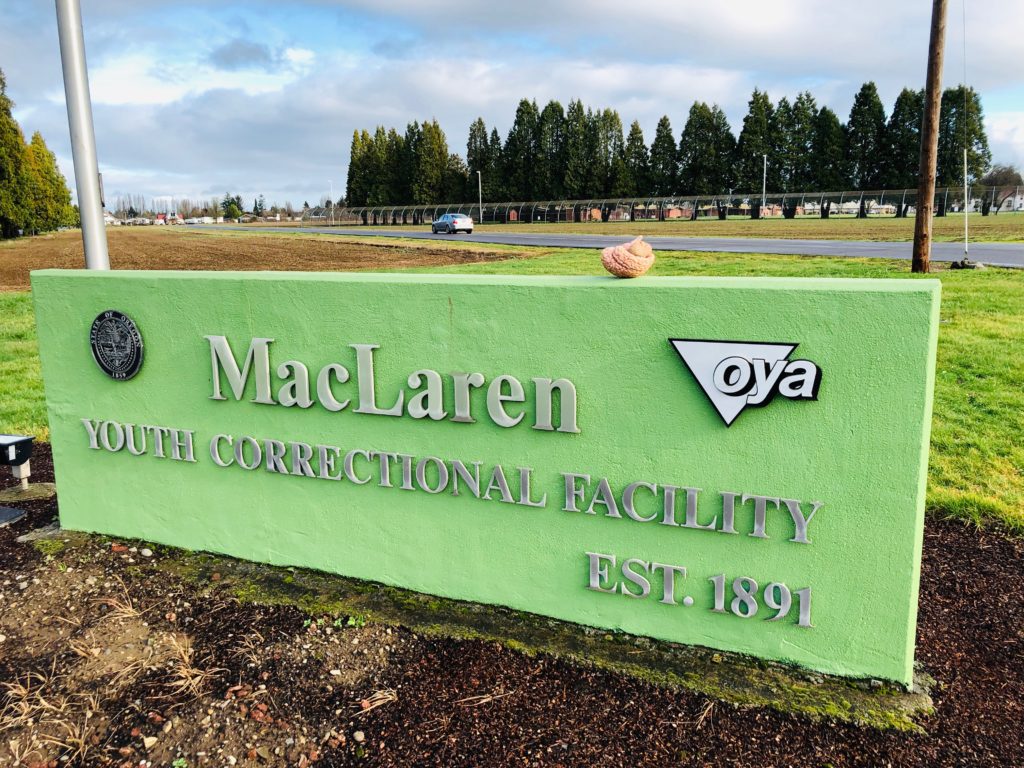
Our NW Noggin volunteers eagerly returned to meet with young people incarcerated at the MacLaren Youth Correctional Facility this week, to check in with folks we’d met last fall, and consider any questions they had about brains and brain research…
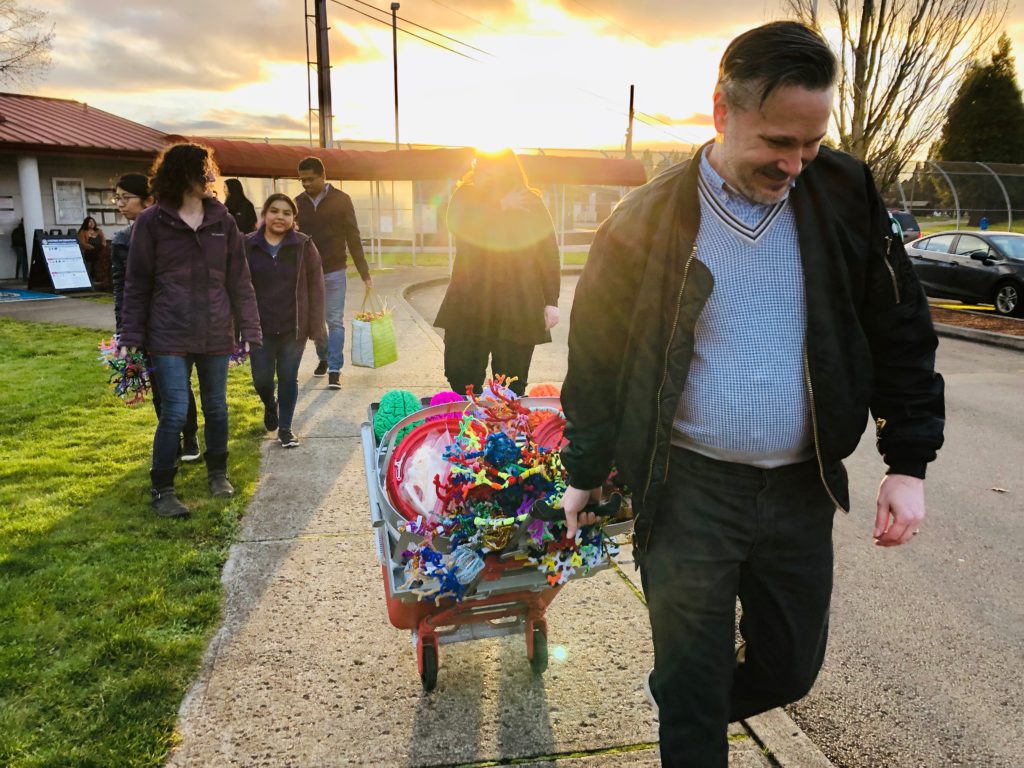
In September we’d joined many of these same youth thanks to Kathleen Fullerton, Program Coordinator for the Hope Partnership, a collaboration between the Oregon Youth Authority and Janus Youth Programs. Hope provides classes and community networking opportunities for young people to help build self-confidence and the skills needed to transform their lives. Hope has arranged for multiple artists, musicians, activists, tradespeople – and neuroscience outreach volunteers – to visit with, listen to, and enrich the experiences of incarcerated youth at MacLaren…
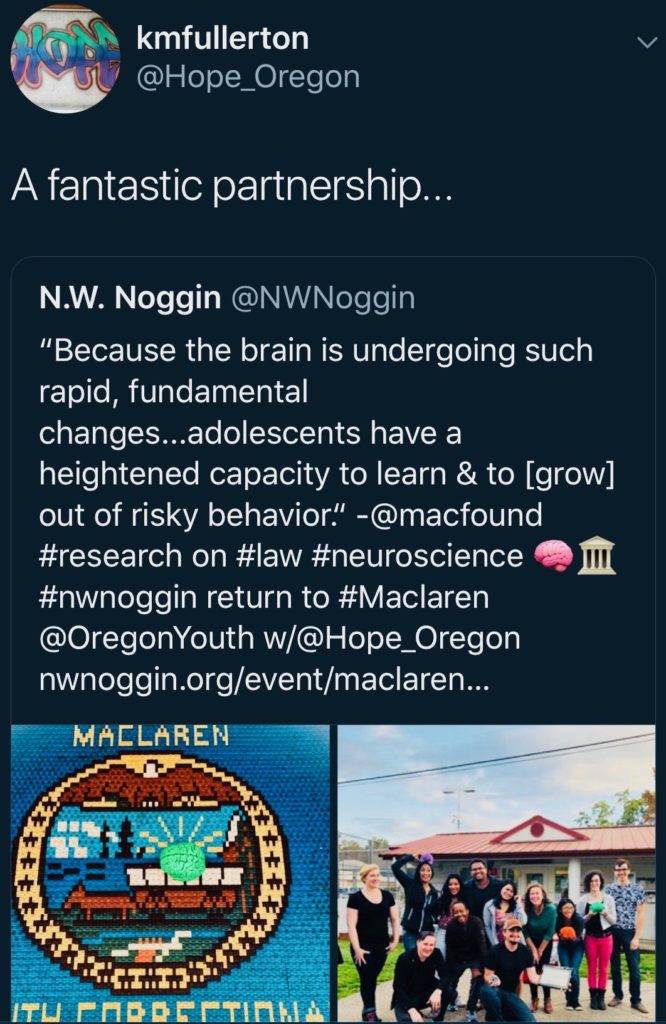
LEARN MORE: Hope Partnership Changes Lives
We’d enjoyed lively discussions about the brain basis of bias in judicial and law enforcement systems, pathways in psychology for counseling and research, and what role neuroscientists play, or might play, in judicial and legislative reform…
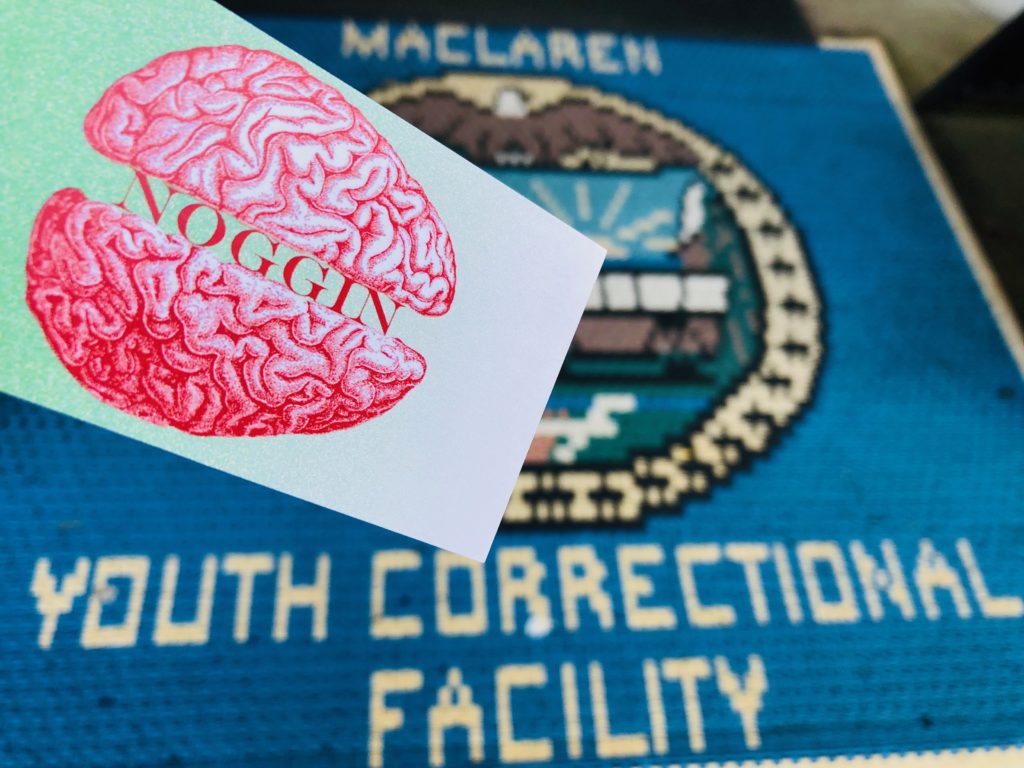
“I think it’s important for us as a society to remember that the youth within juvenile justice systems are, most of the time, youths who simply haven’t had the right mentors and supporters around them – because of circumstances beyond their control.” –Q’orianka Kilcher
We’d also posted a summary of current research on adolescent brain development, trauma, bias, anxiety, stress and other topics critical to understanding why Oregon’s Measure 11, a law passed by Oregon voters in 1994 that established mandatory minimum sentences for “serious crimes against persons” and required defendants aged 15 and older to be tried as adults, is misguided.
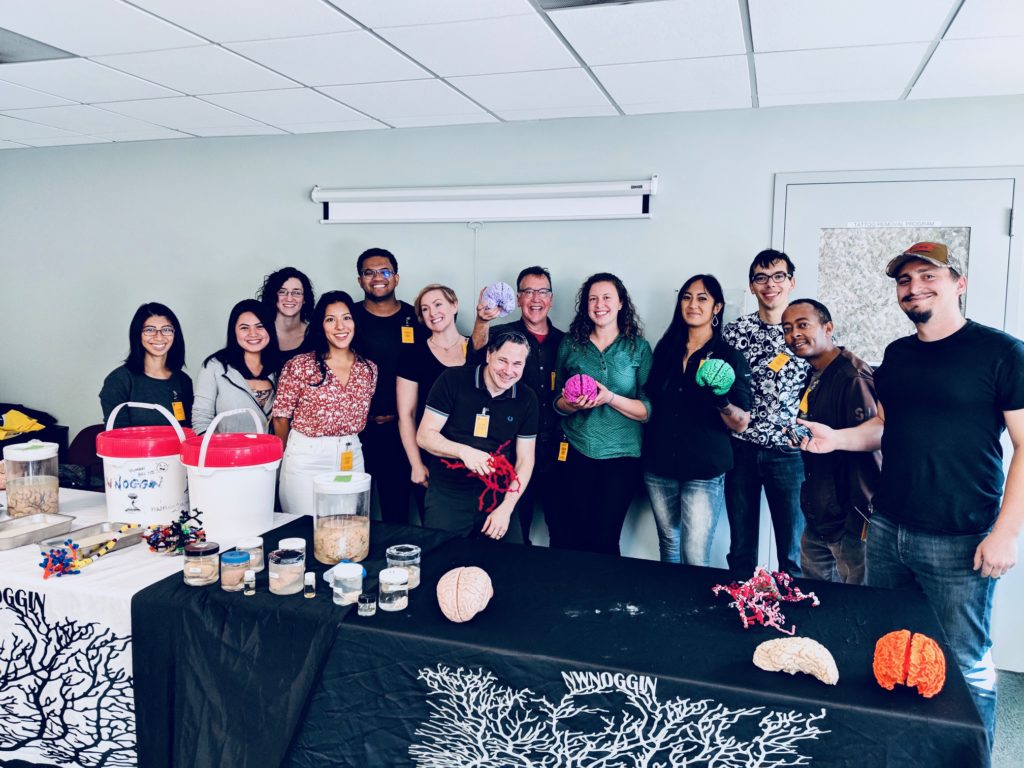
LEARN MORE: Corrections, Bias & Brains
Though on this visit (our third) we also made art!
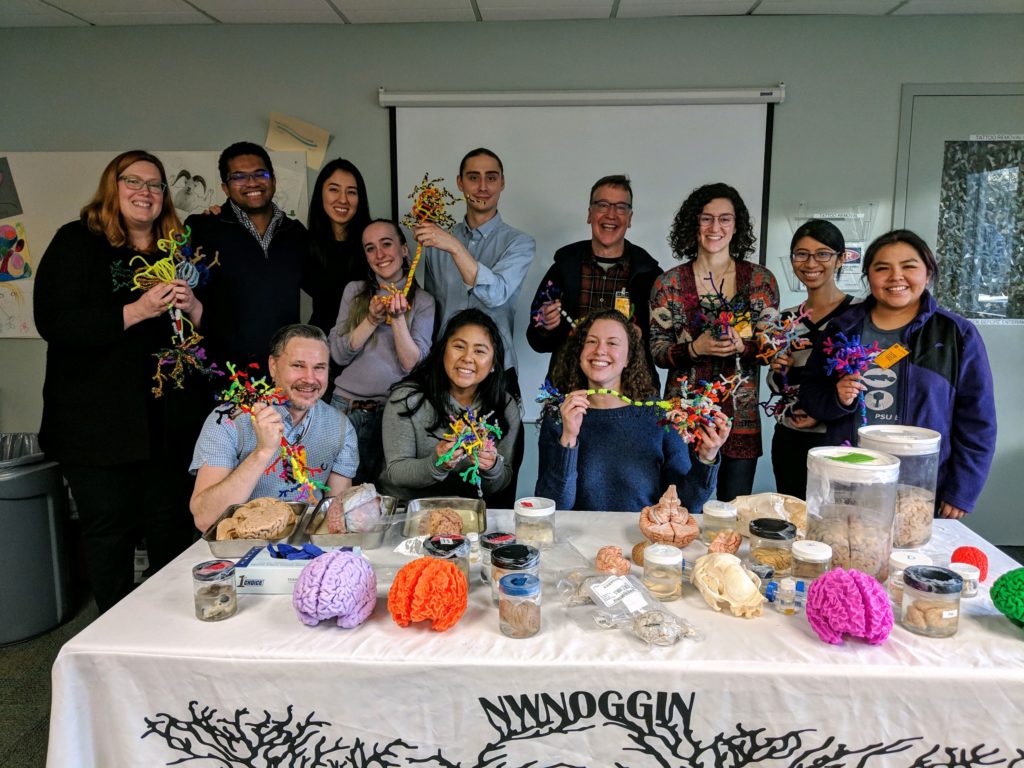
LEARN MORE: How to Make a Pipe Cleaner Neuron
Our volunteers were Nathali May, Sara Moreno, Amanda Saideepane, Madison-Cho Richmond, Aaron Eisen, Chandelle Bates and Cam Howard from Psychology at Portland State University, Taylor Stewart from the University of Portland, and Emma Schifsky, Eileen Torres and Brittany Alperin from Behavioral Neuroscience at Oregon Health & Science University…
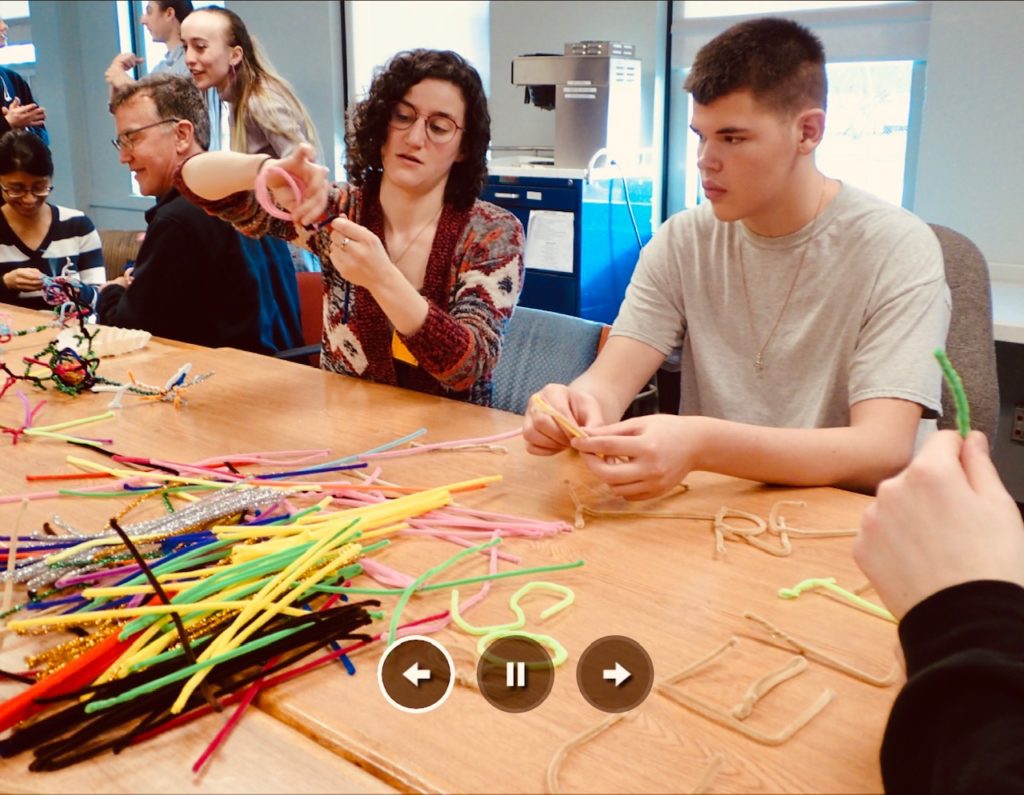
No cell phones allowed: Photo courtesy of the Oregon Youth Authority
We enjoyed twisting colorful new brain cells out of pipe cleaners, while discussing developmental changes underway during adolescence, how to potentially grow new neurons (“neurogenesis“), and the resilience of young brains even after experiencing significant trauma and abuse…

LEARN MORE: Dynamics of hippocampal neurogenesis in adult humans
LEARN MORE: Adult Neurogenesis in the Mammalian Brain: Significant Answers and Significant Questions
LEARN MORE: Adult Neurogenesis in Humans
LEARN MORE: Mental health @ McMenamin’s
From Brittany Alperin, who studies emotional regulation and mind wandering at OHSU: “I had a pretty salient conversation with an inquisitive resident who was asking about traumatic brain injuries (TBI). Clearly concerned about the state of his own brain, we talked about what a TBI is and what it does and how important it is to protect your head.”
LEARN MORE: Traumatic Brain Injury Information Page
LEARN MORE: Traumatic Brain Injury: Hope Through Research
“But more importantly we talked about plasticity and how IF you hit your head, which this resident had many, many times, that the brain can heal itself and start to rewire the pathways that it needs, especially when you’re young!”

“Remember all is in motion, is growing, is you.” –Joy Harjo
LEARN MORE: Neuroplasticity after Traumatic Brain Injury
LEARNN MORE: Addressing TBI through research, outreach & art
Brittany continued: “This young man told me how he gets so angry and sometimes hits his head against the wall. He showed me welts on his head. He was clearly concerned about this behavior, felt ashamed, and didn’t understand why he was doing that. We talked about the limbic system and how humans have a cortex that is able to regulate the limbic system (that’s what makes us special!). He said he wasn’t able to do that. We talked about how that was okay and that he could practice, but it was important that he practiced when he wasn’t mad. We talked about breathing exercises and meditation, and how they can impact your body and brain. He mentioned that people have told him to do those things, but he never understood why.”

Breathe, by Sienna Morris (artwork created in collaboration with Brittany Alperin for their NW Noggin presentation at Velo Cult in Spring 2017)
LEARN MORE: Bathing your brain @ Velo
LEARN MORE: Amygdala–frontal connectivity during emotion regulation
Brittany also noted how critical it was that others understand how hard it can be to control emotional responses after TBI and other trauma: “Overall in talking to him, I got the sense that people have said a lot of vague or grossly exaggerated things to him like “you’ll die if you hit your head again.” And while that might scare him and might seem like it will stop the behavior, if he doesn’t have control when he is emotional, he won’t be able to stop. He really needed someone to sit and explain some of these things to him that he was clearly worried about. He was so open and receptive and curious. Hopefully he’s able to take some of this information and apply it.”
LEARN MORE: Youth and young adults with acquired brain injury transition towards work-related roles: a qualitative study
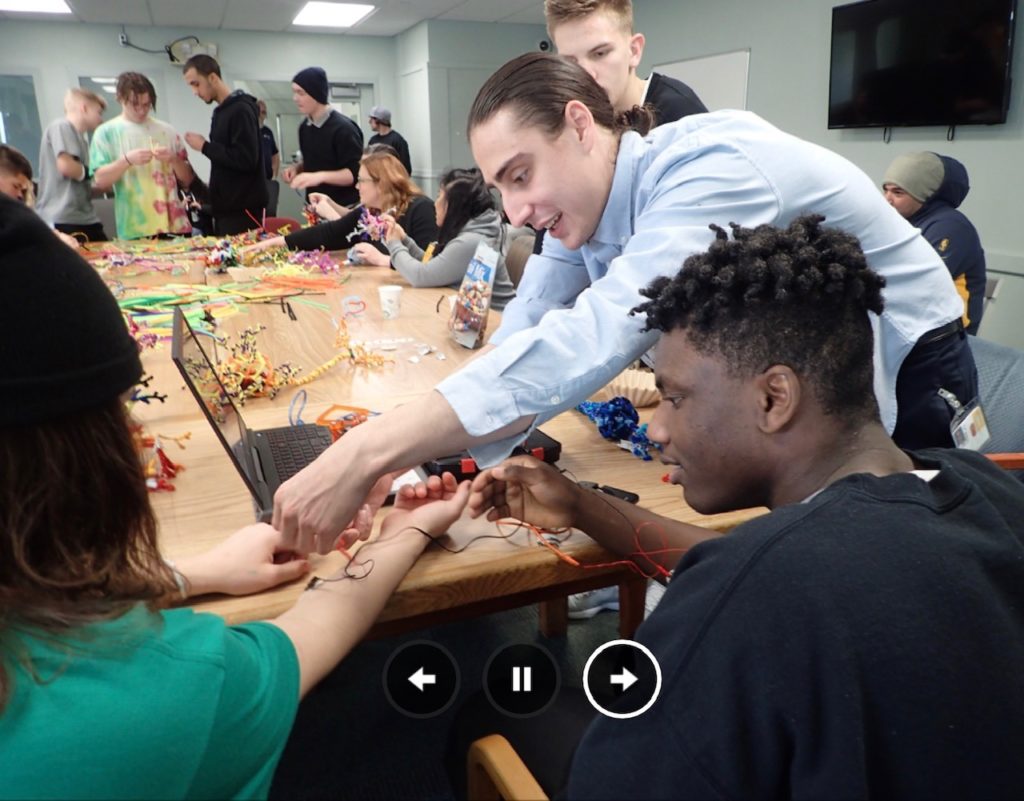
Photo courtesy of the Oregon Youth Authority
Aaron Eisen, the Outreach Coordinator for the PSU Neuroscience Club, also demonstrated the popular Human to Human Interface, from the inspiring educators at Backyard Brains. The device consists of an Arduino micro-controller circuit board which receives electrical input from electrodes placed over muscles on a person’s arm. When that individual moves their hand, it signals the Arduino, which activates a Transcutaneous Electric Nerve Stimulation (or TENS) unit – basically a fancy way to say it delivers an electric shock from a 9 volt battery that stimulates the muscles in a second person’s arm..!
Video courtesy of the Oregon Youth Authority
All this illustrates (pretty directly!) how information is carried by electricity – moving charges – both in copper wires, and in those biological axon wires that make up our complex and developing neural networks, allowing us to move, perceive, remember and decide…

LEARN MORE: Brain Hacking is Electric!
From Amanda Saideepane, an undergraduate in Psychology at PSU: My favorite thing about MacLaren was the sharing of stories and the exchange of knowledge. As time passed, it wasn’t like we were a group of volunteers at the facility but just people spending a Wednesday together…”
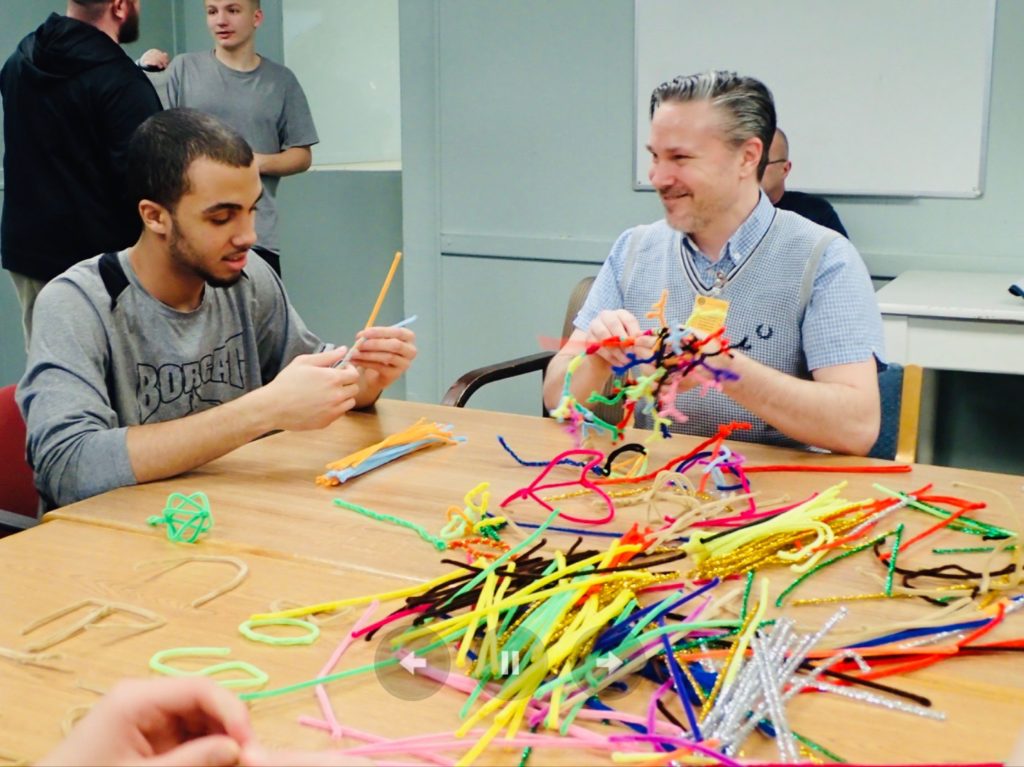
Photo courtesy of the Oregon Youth Authority
“When you look around the room, even the young men who were too shy to interact but quietly observing, learned something that day; about their peers, themselves, and the brain! I think that NW Noggin’s outreach with MacLaren allows for self reflection, to look within and what affects mental health. Our interactions with the youth can shift their perspective on what can be helped and how, based on evidence-based research on brain development.”
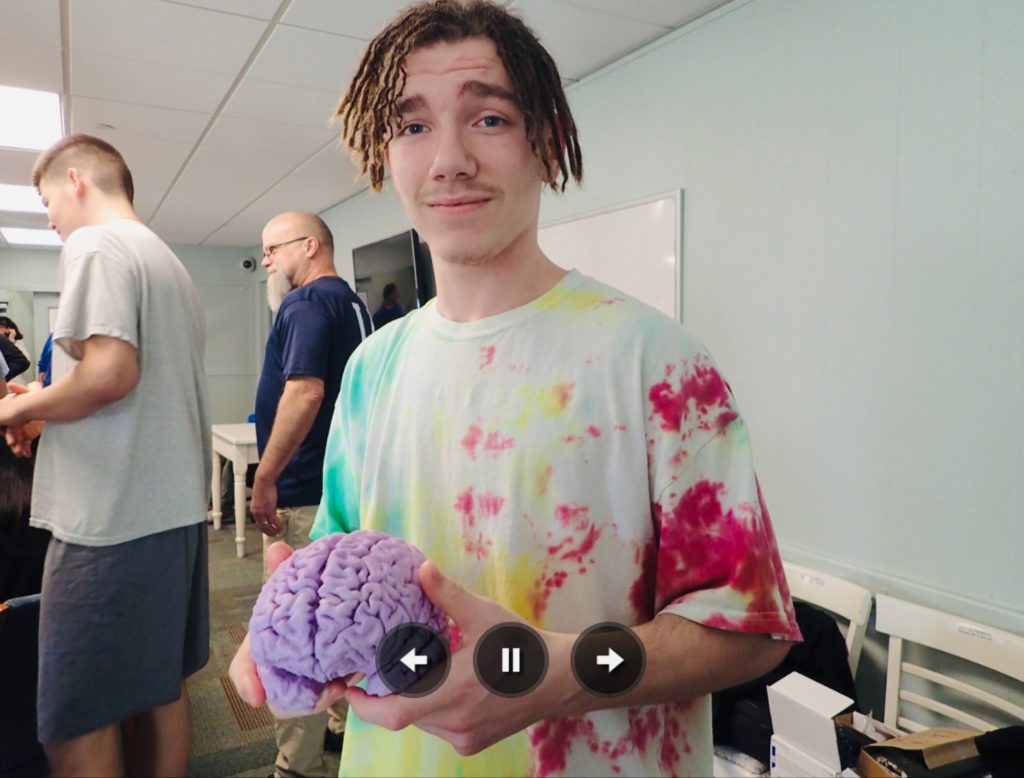
Photo courtesy of the Oregon Youth Authority
More educational opportunity through programs like Hope Partnership is key. According to Amanda, “There was one young man who said he aspires to be a psychologist but added that MacLaren no longer offers psychology classes. It seems that most of these kids crave understanding of their actions and are, like so many of us, fascinated by human behavior. I am so grateful for the experience and looking forward to building a relationship with the youth at MacLaren.”
The Oregon Youth Authority posted a description of our visit last week…
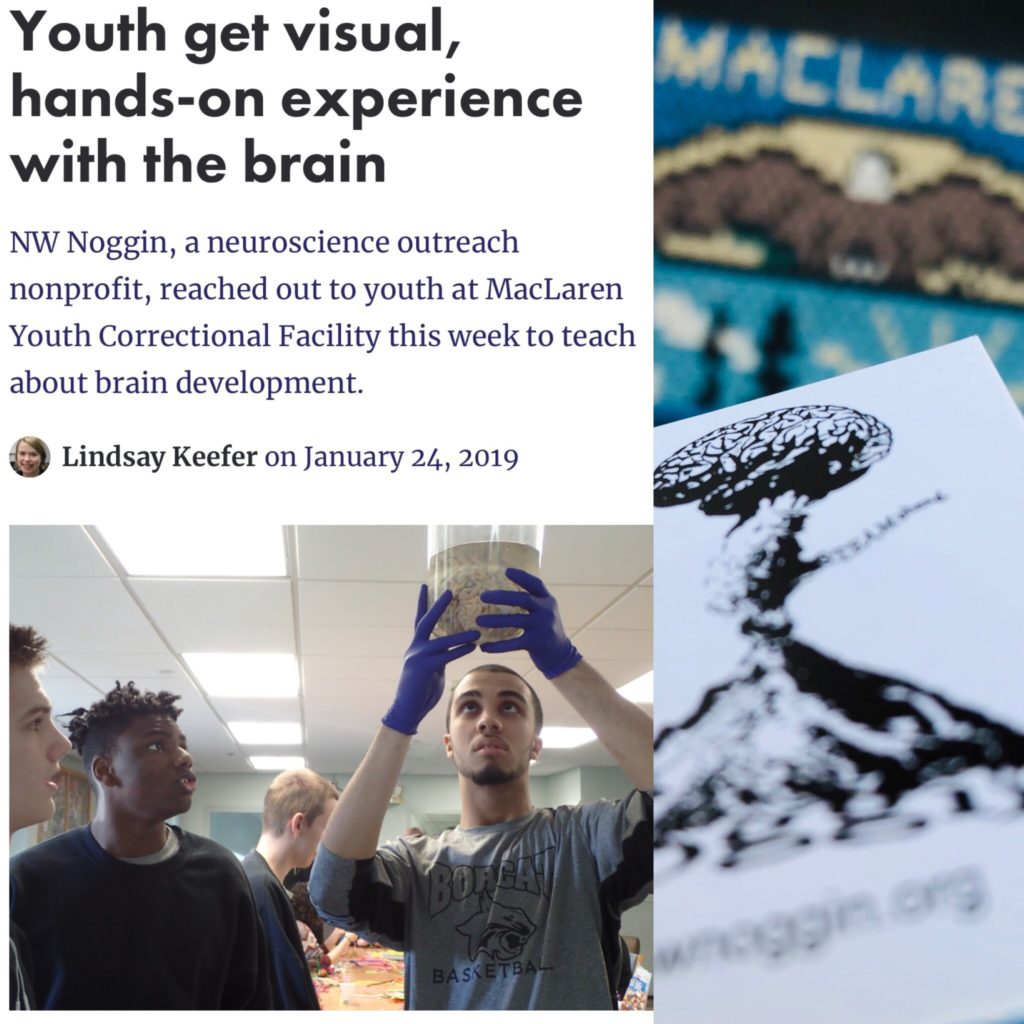
NW Noggin, which Griesar said is making plans to return to MacLaren, doesn’t just come to instruct, but to glean from the youth, as well. “We like to come here because we value their perspective, their different experiences,” he said. “We learn a lot from them, too.”
LEARN MORE: Youth get visual, hands-on experience with the brain
Understanding where people are, including incarcerated youth, correctional staff, families, and members of the public; understanding what people need, based on what we’re discovering about brain development, and the effects of bias, trauma (including TBI), homelessness, sleep deprivation and poverty; and going places, seeing people, and making art and connections – are key to helping our communities thrive.
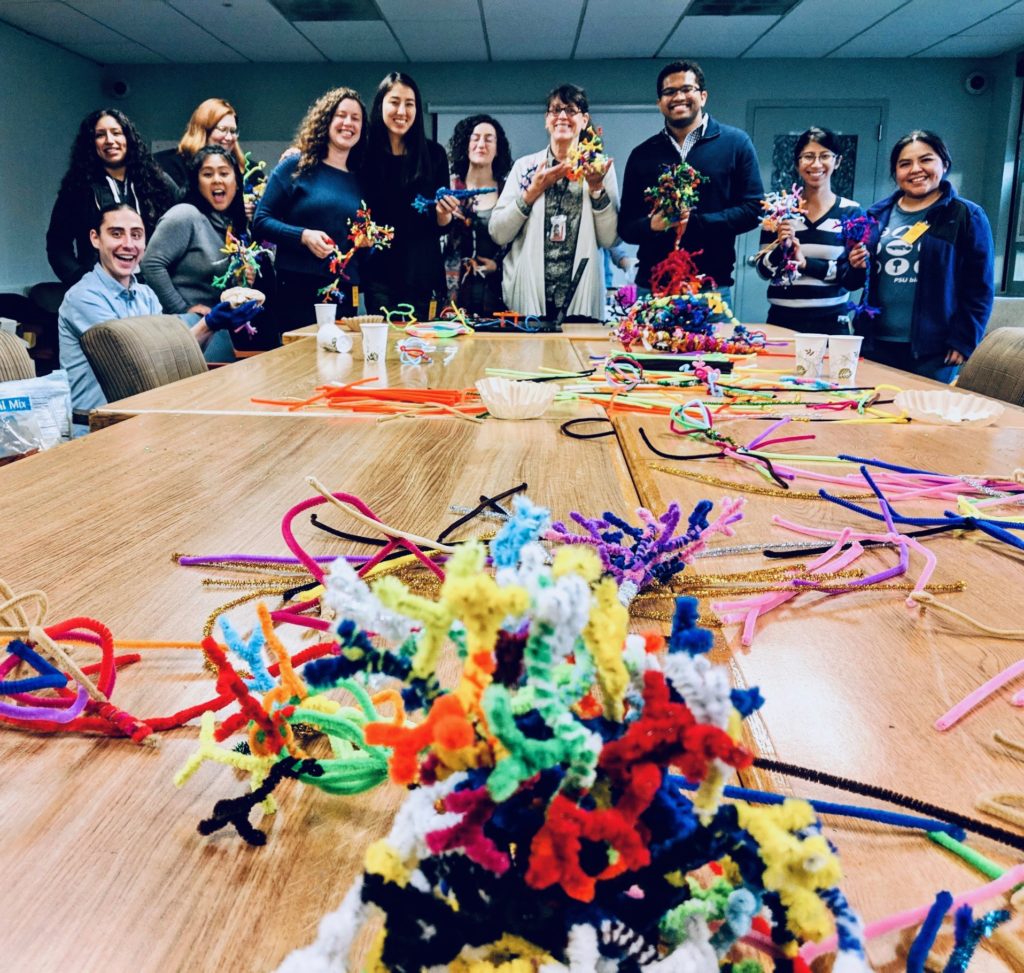
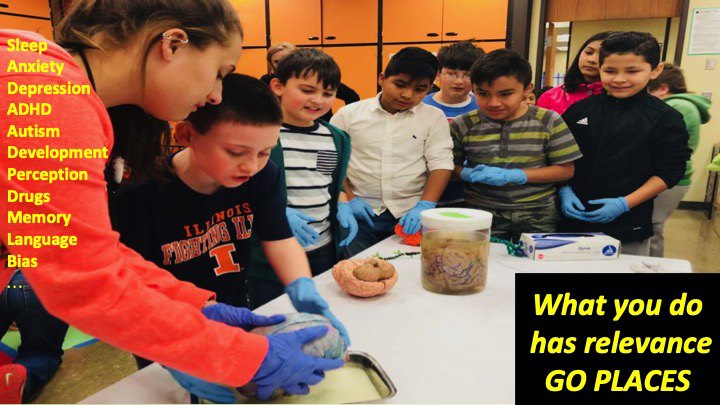
LEARN MORE: Synapsing in San Diego @ SfN
“Remember you are all people and all people
are you.” –Joy Harjo
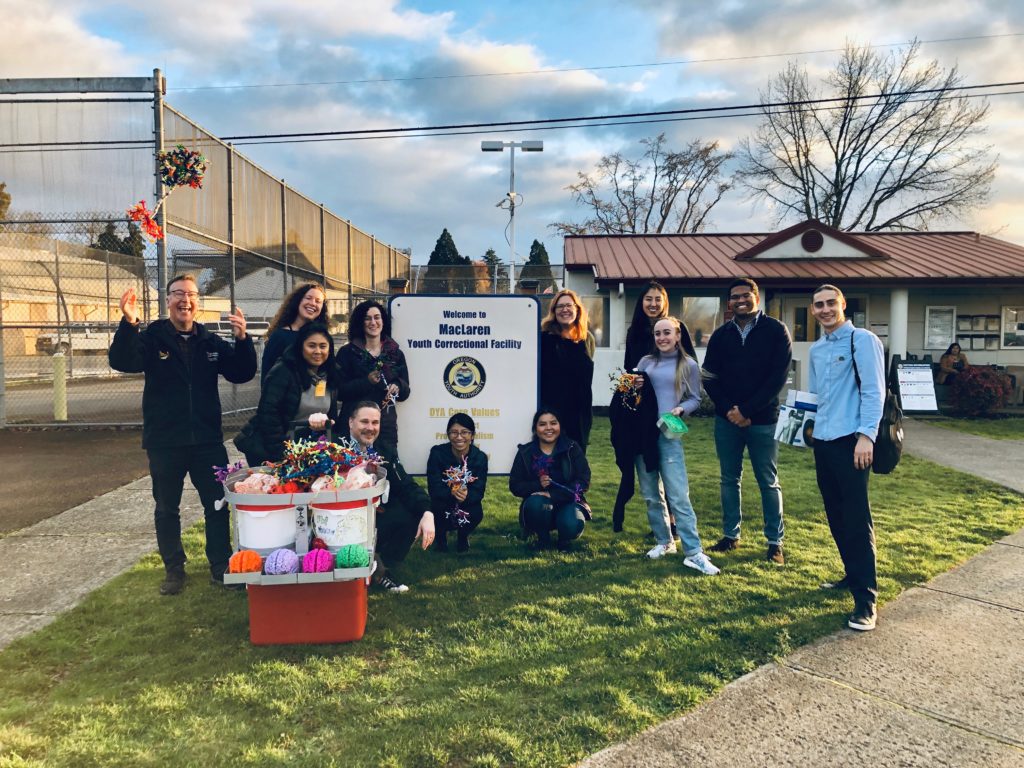
Our sincere thanks to the young people at MacLaren, the Oregon Youth Authority, and Kathleen Fullerton of the Hope Partnership for welcoming us back. We look forward to future visits!


